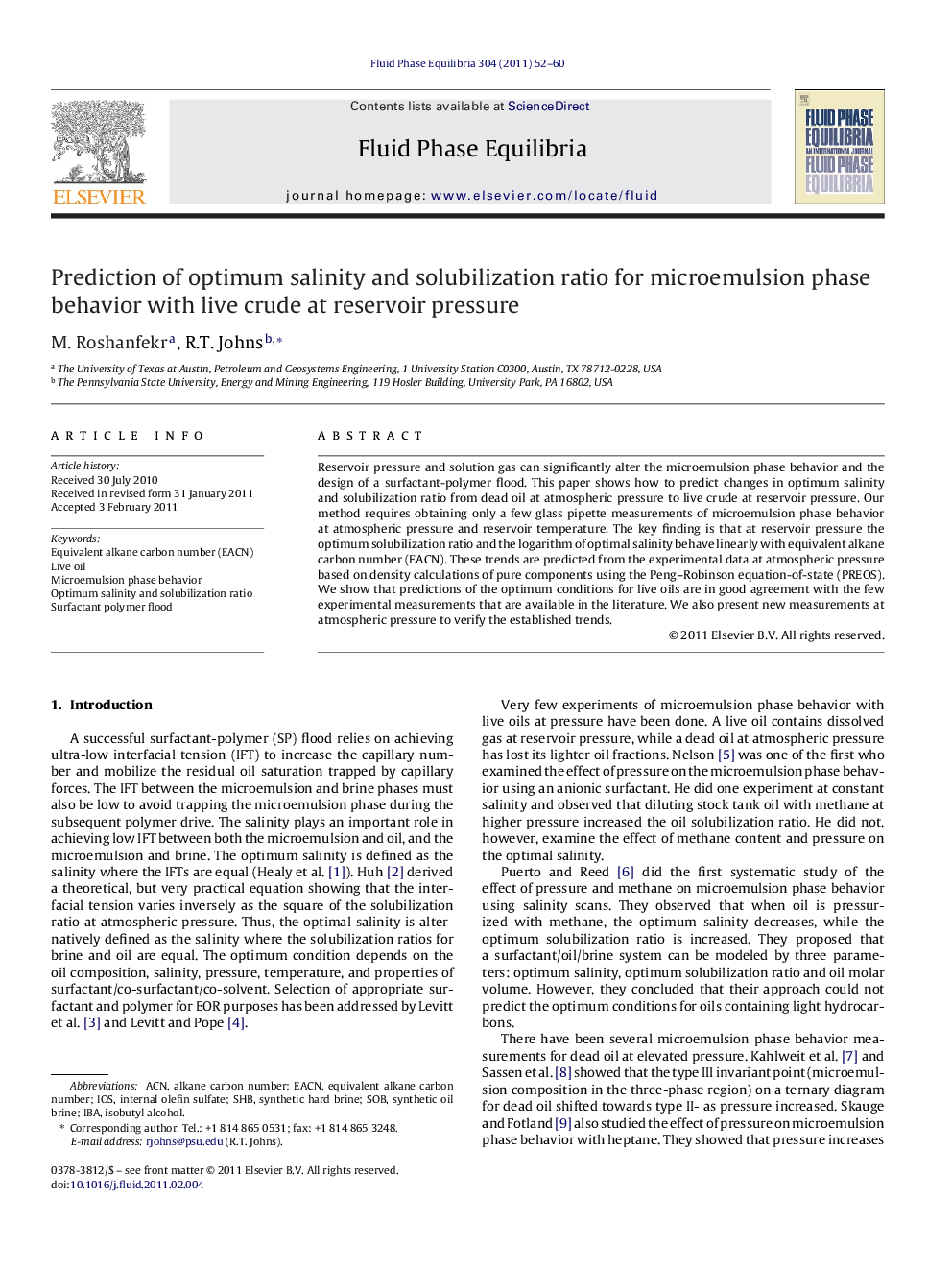| Article ID | Journal | Published Year | Pages | File Type |
|---|---|---|---|---|
| 202848 | Fluid Phase Equilibria | 2011 | 9 Pages |
Reservoir pressure and solution gas can significantly alter the microemulsion phase behavior and the design of a surfactant-polymer flood. This paper shows how to predict changes in optimum salinity and solubilization ratio from dead oil at atmospheric pressure to live crude at reservoir pressure. Our method requires obtaining only a few glass pipette measurements of microemulsion phase behavior at atmospheric pressure and reservoir temperature. The key finding is that at reservoir pressure the optimum solubilization ratio and the logarithm of optimal salinity behave linearly with equivalent alkane carbon number (EACN). These trends are predicted from the experimental data at atmospheric pressure based on density calculations of pure components using the Peng–Robinson equation-of-state (PREOS). We show that predictions of the optimum conditions for live oils are in good agreement with the few experimental measurements that are available in the literature. We also present new measurements at atmospheric pressure to verify the established trends.
Research highlights► The modified EACN approach adjusted for pressure accurately predicts optimum salinity and solubilization ratio for live oils at elevated pressures. ► The only experimental data required for the prediction are measurements at atmospheric pressure for the dead crude oil and a minimum of two dilutions with alkanes. ► The change in optimal salinity with pressure is greater for lower values of EACN. More viscous dead oils, therefore, will likely result in a greater change in optimum conditions as methane is added. ► After the EACN is corrected to reservoir pressure using density, the change in optimum salinity and solubilization ratio of the live crude oil can be predicted using a linear EACN correlation.
